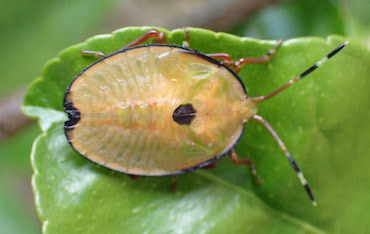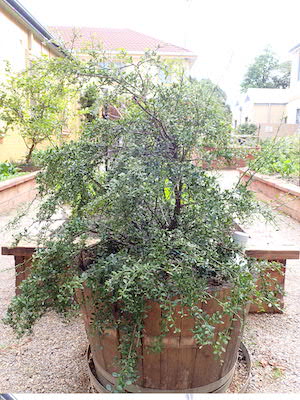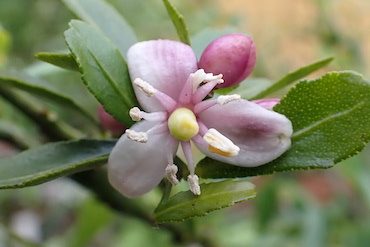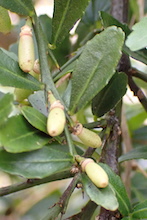Another large group of gardeners worked in the garden today in the fine weather. There were 30 adults and two children. We welcomed Chi and Mark as new members.
We harvested silverbeet, English spinach (and then removed the plants), celery, asparagus, celtuce (you can eat the stems too!), lettuce (Green Cos, Freckles, Rouge d’Hiver, Lollo Rossa, Royal Oakleaf), kale, radish, parsley, pineapple sage and garlic.
Some plants are nearing the end of their season. The silverbeet and lettuce will go to seed as the weather warms up (some of both is already starting), as will the celery.
As some previously sown seeds of various bean varieties did not germinate, we resowed seeds of the appropriate variety in the gaps. A patch of bush beans (Stringless) has germinated well. We also sowed beetroot (Detroit). Myrtle, one of our members, provided some seedlings of tatsoi (Chinese Flat Cabbage, a cut-and-come-again salad green) and winged beans (often grown in tropical areas) and we planted both. A few extra tomato seedlings (cherry varieties and one Scorpio) were planted, as well as some spring onions.
Various beds are being prepared for other plantings in the near future, such as basil, eggplant, okra (resowing) and more beans!
One side benefit of growing beans (or peas) is that they can produce their own nitrogen plant food themselves. Nitrogen is one of the main nutrients plants need and is a major component of Charlie Carp and blood and bone fertilisers, which we need to use because most plants cannot use nitrogen gas (from the air) directly. However, beans and peas are legumes, which have particular bacteria (various Rhizobium species) in their roots that can convert nitrogen from air in soil pockets into a form of nitrogen the plants can use themselves.
Sunflowers that were planted pretty randomly around the garden by children – who had a good time doing it! – were moved to corners of beds, where it’s more convenient to have them, and we look forward to another spectacular summer display.
The Nagami cumquat tree, which has had yellowing leaves for a while, was given some Epsom salts (a magnesium supplement) to try to restore some green to the leaves. The cause of the yellowing isn’t clear, so we’ll give the tree an iron supplement too in a couple of weeks.
With warm weather come some new pests. Bronze orange bugs (also affectionately known as stink bugs) have started to appear on the Tahitian lime (photo below). These bugs are native insects and will attack citrus plants (Rutaceae family). As there is no suitable, specific, organic spray for them, control them by squashing (!) them or trying to knock them into soapy water.
Our finger lime (Citrus australasicus) has had flowers for a while and there are now some tiny fruit that have set and are developing (photos below). As finger limes belong to the citrus family, they are fair game for bronze orange bugs, so we’ll need to keep an eye on our finger lime – and other citrus trees – and kill any of these bugs.




